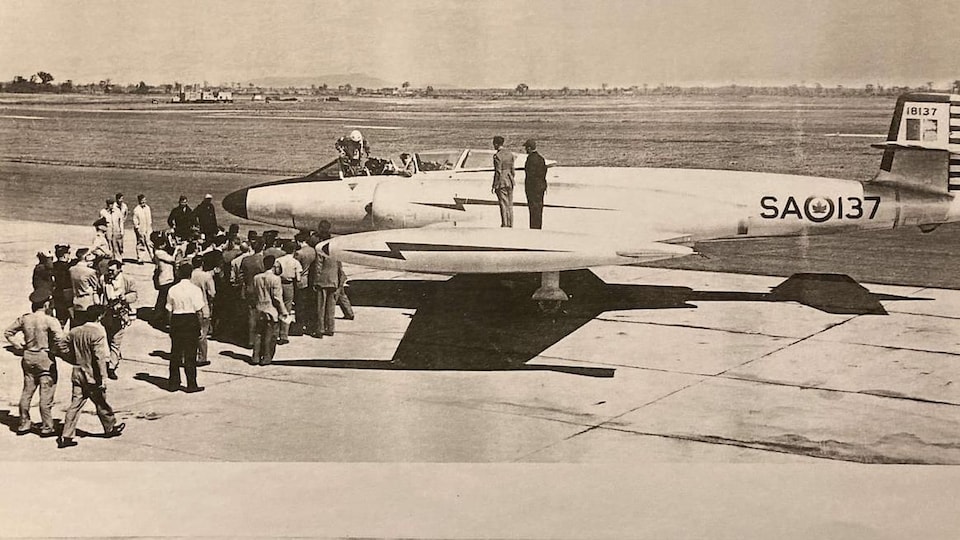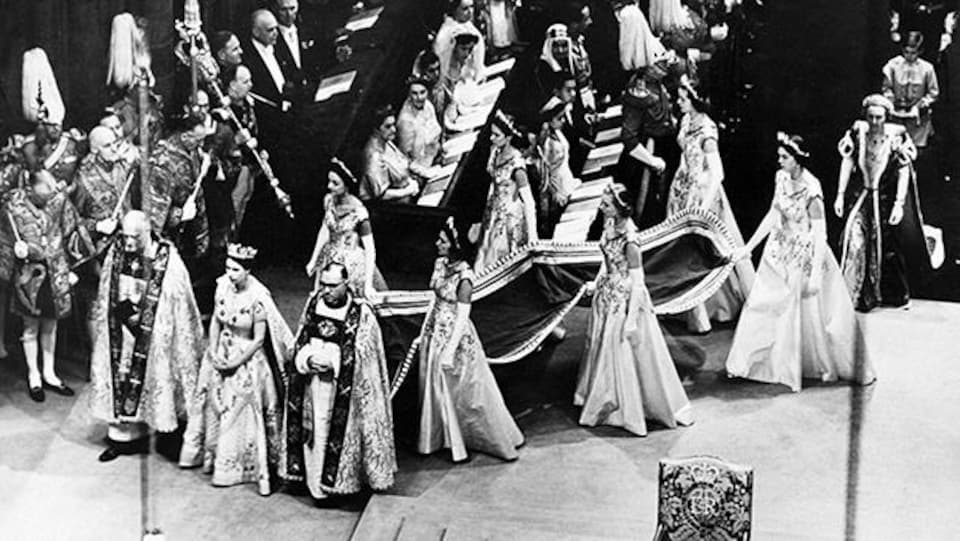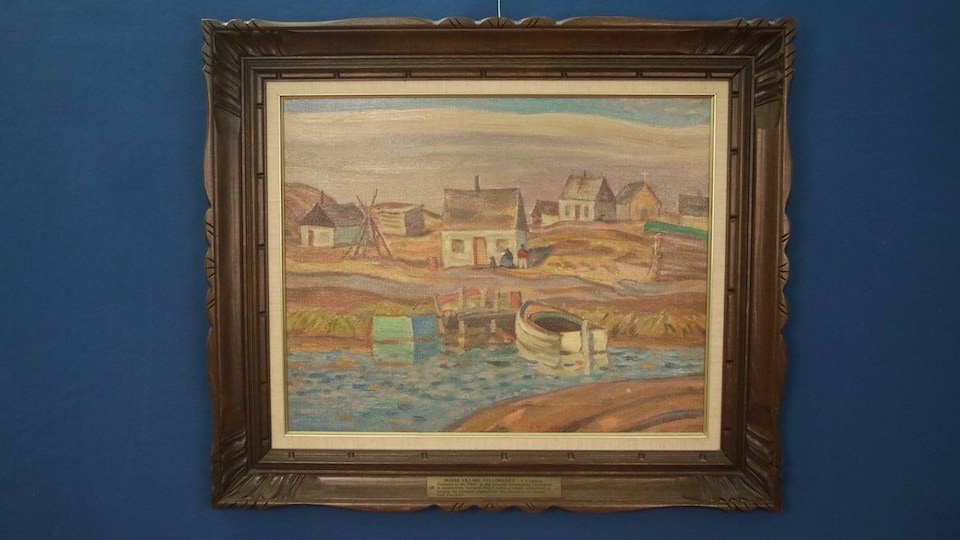A family from Thunder Bay, Ontario, the Nickersons, thought they had the answer to that question. Rob Nickerson explains that, according to family legend, his uncle George piloted the plane that crossed the Atlantic Ocean carrying the recordings of the coronation to Canada.
George Nickerson was the family hero. Her nephew Rob, who sought to find out more as the Queen’s Jubilee approached, realized that the family history was not entirely accurate.
The CF-100 bomber piloted by his uncle could not hold enough fuel oil for a transatlantic flight.
The truth, he discovered, was much more complex, and above all much more exciting.
It involves the Canadian air force, the British air force, the BBC and CBC/Radio-Canada, which was a very young company at that time. Not forgetting, of course, a wing commander stationed in Winnipeg, George Nickerson, who had been ordered to carry out an unusual mission that would change what the world believed possible, in the air and on the airwaves.
Operation Pony Express
The British Broadcasting Corporation (BBC) had agreed to film the coronation through a process it had developed and named telerecording
which recorded images on a state-of-the-art flat screen TV.
The brand new Canberra bomber planes of the Royal Air Force British (RAF) were requisitioned to transport the film reels to Canada.
According to military historian Mike Bechthold, the military was at the forefront of communications technology at this time.
They had to film and then develop the film. It had to go to Heathrow airport from where it was shot in London. This transfer took place by helicopter. We then put the films on a bomber plane, which crossed the Atlantic
he says.
It took five and a half hours to cross the ocean, he said. The British bomber landed at Canadian Forces Base Goose Bay, Labrador, where a Canadian Air Force CF-100 bomber and its pilot, George Nickerson, were flying.
The role of the wing commander was to transport the 17 reels and their 190 kilos on board his plane to the Saint-Hubert airport in Quebec, where a helicopter would pick them up to bring them to the CBC/Radio-Canada studios. to Montreal.
At that time, the company had been broadcasting TV shows for just nine months.
By planning the operation Pony Expressthe director of information of the British Air MinistryLM MacBride, wrote a letter presenting the plan as an opportunity to build respect for the military and support for the monarchy in both Canada and the United States.
Succeeding in presenting the coronation almost simultaneously on the North American continent offered him a wonderful opportunity to gain international publicity for the R.A.F. while contributing to the prestige of Great Britain throughout the American continent
.
Objective: beat the Americans
CBC/Radio-Canada will have to spend a tidy sum to use the services of the Canadian air force. She had to pay $11,650, the equivalent, today, of $1.5 million. But a commercial flight would have taken 10 hours to make the trip, and Radio-Canada had no time to lose.
For the public broadcaster, what mattered most was being the first to show these images in North America, according to Mike Bechthold. They wanted to “scooper” the Americans. They would probably have arrived second with a commercial flight, so they had to find another solution.
From the filming location in London to the studios in Montreal, the operation Pony Express took the time the Earth takes to turn on itself. And time zones being what they are, it allowed the coronation to be broadcast in Canada at the same local time
than the event itself in London.
This is how CBC/Radio-Canada was able to broadcast images live
of the coronation.
Among our American neighbors, the NBC network had also organized the transport of images by plane, retaining the services of a Canberra bomber from the Venezuelan army, without CBC/Radio-Canada knowing it.
CBC/Radio-Canada lived up to its bet by going on the air 30 minutes before the Americans.
The planes took just over five hours to reach the Canadian base in Goose Bay, and CBC/Radio-Canada released this footage two and a half hours later, at 4:15 p.m. EST on June 2 1953.
And then?
The management of the public broadcaster was amazed. In a telegram to BBCCBC/Radio-Canada President Arnold Dunton called the mission a brilliant achievement
.
The public broadcaster subsequently offered the Royal Canadian Air Force the web Indian Village Yellowknife from Group of Seven artist AY Jackson in appreciation for his role in Operation Pony Express.
The canvas is still today at the air force base in Winnipeg. We can see it in a book that Mike Bechthold is preparing for the centenary of the Royal Canadian Air Force in 2024.
As for the operation Pony Express, it almost didn’t happen. Queen Elizabeth II was reluctant to allow all this pomp on the occasion of her coronation. She changed her mind because more people could see her.
For Alan MacEachern, professor of history at the University of Western Ontario, this coronation is one of the events that established television as an important medium.
People realized that television was here to stay
he said.
George Nickerson died in CF-100 crash a year after surgery Pony Express. For his family, he will remain the hero of this story. Finding the truth was pretty cool, says his nephew Rob. Pretty cool, especially for him.
With information from Jon Thompson
Reference-ici.radio-canada.ca


